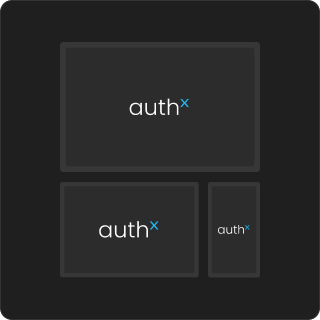Upgrade Workstation Protection with AuthX Secure
Enable quick and easy access to essential programs and information while ensuring robust workstation security.
Understanding AuthX Secure
AuthX Secure is designed to protect workstations, ensuring quick and easy access to essential programs and information. It supports various access methods, including RFID/NFC tap-and-go, Biometric Authentication, Mobile Passwordless Authentication, etc. AuthX Secure integrates Multi-Factor Authentication (MFA) and Single Sign-On (SSO) to provide robust security without compromising convenience.
RFID/NFC Tap & Go
Use badges for quick and easy system access.
Multi-Factor Authentication
Enhance security with multiple verification layers
Single Sign-On (SSO)
Seamless authentication for various applications.
Adaptable Authentication Workflows
Ensure secure access in various environments.

Multiple Access Workflow Support
Cater to different user scenarios with flexible access modes.
Biometrics
Use advanced biometric methods, such as fingerprint and facial recognition, for convenient authentication.
Passkeys
Adopt passwordless authentication for secure access, using cryptographic keys instead of traditional passwords
Efficient Workstation Access with AuthX Secure
Experience efficient access management with AuthX Secure, utilizing RFID badges for swift and secure workstation login. This solution enhances productivity by enabling remote security access, allowing employees to log in securely from various locations.
For example, employees seamlessly access their workstations using AuthX Secure with RFID badges, ensuring quick login and secure access to essential applications and data with help of remote security access, enhancing productivity, and maintaining robust security measures.
Access Workflows that Suit Your Requirements
AuthX Secure supports various workflows to accommodate different access requirements
Shared Workstation Mode
Single User Mode
Workstation Lock Mode
Delegation Mode
Kiosk Mode
AuthX Secure allows you to configure security policies and authentication workflows that adapt to your organization’s specific needs, enhancing workstation security and ensuring uniform access. Whether logging in from home or office, the system dynamically adjusts authentication requirements based on location and network environment, ensuring secure access without compromising productivity.
Tailor workflows for different roles, departments, or devices, giving you full control over user access while maintaining robust security across all environments.
Enhance Your Workflows with Security Policies and Authentication Strategies
AuthX Secure offers extensive compatibility with various operating systems and hardware devices, ensuring versatile and comprehensive security solutions. It supports multiple devices, including badge tap readers, smartcard readers, hardware tokens, facial recognition systems, and keyboards.
For operating systems, AuthX Secure seamlessly integrates with Windows, Mac OS, ChromeOS, and Linux Thin-Client Environment (IGEL, NComputing, Stratodesk).
Additionally, it provides robust mobile support with integration capabilities for devices such as U.ARE.U, inbuilt cameras, and fingerprint readers, catering to diverse user needs across different platforms and device types while maintaining high standards of workforce security.
Supported Protocols
AuthX Secure supports several widely used authentication protocols to ensure secure and efficient access management:
SAML (Security Assertion Markup Language)
Facilitates single sign-on (SSO) by logging users into applications based on sessions.
FIDO WebAuthn
A standard for passwordless authentication, enabling secure login through public key cryptography.
OpenID
Allows users to use a single set of credentials for authentication across multiple sites.
OAuth (Open Authorization)
Provides secure access to protected data without sharing passwords.
RADIUS (Remote Authentication Dial-In User Service)
Authorizes and authenticates users accessing a remote network.
LDAPS (LDAP over SSL)
Secure version of LDAP encrypting the authentication process.
RDP (Remote Desktop Protocol)
Enables remote access to physical work desktop computers, further enhancing workstation security.
